DUBROVNIK, Croatia: Marc van Bloemen has lived in the old town of Dubrovnik, a Croatian citadel widely praised as the jewel of the Adriatic, for decades, since he was a child. He says it used to be a privilege. Now it’s a nightmare.
Crowds of tourists clog the entrances to the ancient walled city, a UNESCO World Heritage Site, as huge cruise ships unload thousands more daily. People bump into each other on the famous limestone-paved Stradun, the pedestrian street lined with medieval churches and palaces, as fans of the popular TV series “Game of Thrones” search for the locations where it was filmed.
Dubrovnik is a prime example of the effects of mass tourism, a global phenomenon in which the increase in people traveling means standout sites — particularly small ones — get overwhelmed by crowds. As the numbers of visitors keeps rising, local authorities are looking for ways to keep the throngs from killing off the town’s charm.
“It’s beyond belief, it’s like living in the middle of Disneyland,” says van Bloemen from his house overlooking the bustling Old Harbor in the shadows of the stone city walls.
On a typical day there are about eight cruise ships visiting this town of 2,500 people, each dumping some 2,000 tourists into the streets. He recalls one day when 13 ships anchored here.
“We feel sorry for ourselves, but also for them (the tourists) because they can’t feel the town anymore because they are knocking into other tourists,” he said. “It’s chaos, the whole thing is chaos.”
The problem is hurting Dubrovnik’s reputation. UNESCO warned last year that the city’s world heritage title was at risk because of the surge in tourist numbers.
The popular Discoverer travel blog recently wrote that a visit to the historic town “is a highlight of any Croatian vacation, but the crowds that pack its narrow streets and passageways don’t make for a quality visitor experience.”
It said that the extra attention the city gets from being a filming location for “Game of Thrones” combines with the cruise ship arrivals to create “a problem of epic proportions.”
It advises travelers to visit other quaint old towns nearby: “Instead of trying to be one of the lucky ones who gets a ticket to Dubrovnik’s sites, try the delightful town of Ohrid in nearby Macedonia.”
In 2017, local authorities announced a “Respect the City” plan that limits the number of tourists from cruise ships to a maximum of 4,000 at any one time during the day. The plan still has to be implemented, however.
“We are aware of the crowds,” said Romana Vlasic, the head of the town’s tourist board.
But while on the one hand she pledged to curb the number of visitors, Vlasic noted with some satisfaction that this season in Dubrovnik “is really good with a slight increase in numbers.” The success of the Croatian national soccer team at this summer’s World Cup, where it reached the final, helped bring new tourists new tourists.
Vlasic said that over 800,000 tourists visited Dubrovnik since the start of the year, a 6 percent increase from the same period last year. Overnight stays were up 4 percent to 3 million.
The cruise ships pay the city harbor docking fees, but the local businesses get very little money from the visitors, who have all-inclusive packages on board the ship and spend very little on local restaurants or shops.
Krunoslav Djuricic, who plays his electric guitar at Pile, one of the two main entrances of Dubrovnik’s walled city, sees the crowds pass by him all day and believes that “mass tourism might not be what we really need.”
The tourists disembarking from the cruise ships have only a few hours to visit the city, meaning they often rush around to see the sites and take selfies to post to social media.
“We have crowds of people who are simply running,” Djuricic says. “Where are these people running to?“
Mass tourism threatens Croatia’s ‘Game of Thrones’ town
Mass tourism threatens Croatia’s ‘Game of Thrones’ town

Tunisia sets sights on becoming world’s top seawater therapy spot

- Thalassotherapy is an “ancestral heritage” for Tunisians, “since hydrotherapy has existed in Tunisia since antiquity, at the time of the Carthaginians and the Romans,” Shahnez Guizani, the head of the National Office of Thermalism (ONTH), told AFP
KORBOUS, Tunisia: With a Mediterranean coastline, natural thermal springs, clement weather and affordability, Tunisia has become the world’s second-largest destination for seawater-based treatments known as thalassotherapy.
Now, it is setting its sights on overtaking France to claim the top spot.
“The main advantage of Tunisia is its coast and thalassotherapy,” compared with neighboring countries, said Mario Paolo, an Italian, at the Korbous thermal spa, perched on a hill an hour’s drive from the capital, Tunis.

A 78-year-old retiree who has lived in Tunisia for the past five years, Paolo said he frequently visits Tunisian thalassotherapy centers “to get back in shape.”
“Enjoying sea water and natural springs is not just leisure but also a therapy,” Paolo said after a thyme and rosemary oil massage.
Korbous, a coastal town on the Cap Bon peninsula, has historically been one of Tunisia’s hot spots for the therapy, which uses sea water and other marine resources.
Thalassotherapy is an “ancestral heritage” for Tunisians, “since hydrotherapy has existed in Tunisia since antiquity, at the time of the Carthaginians and the Romans,” Shahnez Guizani, the head of the National Office of Thermalism (ONTH), told AFP.

Other popular thalassotherapy destinations in the country include Sousse, Hammamet, Monastir, and Djerba, which Tunisian news agency TAP said was named the Mediterranean thalassotherapy capital in 2014 by the World Federation of Hydrotherapy and Climatotherapy.
Rouaa Machat, 22, said she traveled from France to Korbous for a three-day wellness retreat.
“I’m here to enjoy the types of water this beautiful town offers,” she said, referring to the use of seawater, spring water, and desalinated water for therapy.
“But I am also here for this,” she added, grinning and pointing to the Korbous sea and mountains.

Customers mainly come for the quality of spring water, said Raja Haddad, a doctor who heads the thalassotherapy center at the Royal Tulip Korbous Bay hotel.
Today, Tunisia boasts 60 thalassotherapy centers and 390 spas, 84 percent of which are located in hotels, according to the ONTH.
Tourism accounts for seven percent of the country’s GDP and provides nearly half a million jobs, according to official figures.
The sector has seen a decade of setbacks due to terrorist attacks and later the COVID-19 pandemic.
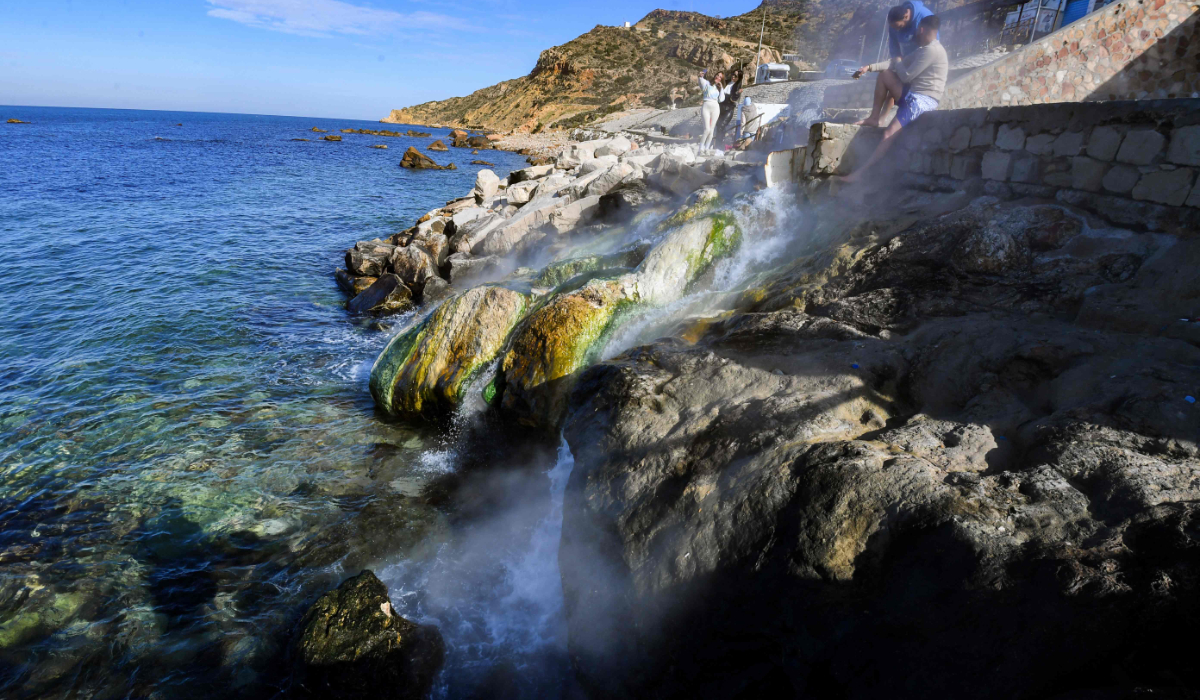
But it has been recovering again as the number of foreign visitors exceeded 10 million last year — a record for the country of 12 million people.
Guizani said thalassotherapy on its own draws about 1.2 million foreign visitors a year, with “70 percent coming from Europe, including 40 percent from France.”
The industry generates approximately 200 million dinars ($63 million, 60 million euros) per year, she added.
That compares with a French thalassotherapy market valued at around 100 million euros last year, according to market research firm Businesscoot.
At a luxury hotel near Monastir, a thalassotherapy center buzzes with customers despite the cold winter season.
Visitors have come from France, Germany, the United Kingdom, Canada, among other countries.
“As soon as you arrive, you find palm trees and the sun,” said Monique Dicrocco, a 65-year-old French tourist. “It’s pure happiness, and it’s also worth your money.”
“Here the therapy is much cheaper than in France, with 1,000 euros a week all inclusive instead of 3,000,” she added.
Jean-Pierre Ferrante, 64, from Cannes, said he found “the quality of the water and the facilities just as good as in France.”
Kaouther Meddeb, head of the thalassotherapy and spa center at the Royal Elyssa Hotel in Monastir, said the number of clients has been growing lately.
Yet despite meeting international standards, the sector remains underappreciated in Tunisia, she said.
“There’s a lack of communication and promotion,” she added.
Experts say more investment is needed in infrastructure. This includes road improvements and air services, they say, as there are few low-cost flights.
But plans are already underway to develop eco-friendly thermal resorts in regions like Beni M’tir, a mountainous village in the northwest, and near Lake Ichkeul south of Bizerte, said Guizani.
“With all the advantages it has, Tunisia is poised to become the world leader in thalassotherapy,” she added.
Exploring the history of Saudi Arabia’s ancient Dumat Al-Jandal

- Dumat Al-Jandal was strong and rich because of trade, says Saudi archeologist
RIYADH: In the heart of Al-Jouf, around 50km away from Sakaka, is the city of Dumat Al-Jandal — or, to give it its ancient name, “Adumato.”
Civilizations and kingdoms have thrived here for thousands of years, leaving behind traces of their existence carved onto walls and corners.
“It was a rainy period with rivers and forests, then it turned into a savanna, then into a period of little rain, then the habitation moved to other nearby sites such as the site of Al-Jamal and the site of Al-Rajajil,” explained Hussain Al-Khalifah, a Saudi archaeologist with over 30 years’ experience.

“After that, the Arabian Peninsula became a desert as we see it today. In ancient times, humans moved to sites with fertile soil and water resources. Therefore, Dumat Al-Jandal is one of the oldest cities inhabited around the second millennium BCE,” he said.
FASTFACT
Among the kingdoms and empires that tried to control Dumat Al-Jandal were the Assyrians, who made numerous attempts to control and capture the lands.
A trade road was created to exchange goods and link regions, and Dumat Al-Jandal was one of the significant points on this for people coming from the south of the Arabian Peninsula.
“It was an important point at the beginning of the land trade,” Al-Khalifah told Arab News.

“Dumat Al-Jandal was strong and rich because of trade. The people were protectors of the trade that passed by the city and, therefore, they took some of the goods in exchange for protecting merchants.”
Among the kingdoms and empires that tried to control Dumat Al-Jandal were the Assyrians, who made numerous attempts to control and capture the lands.
However, another kingdom was rising at the same time — the Arabian Qedarites, which not only prevented the Assyrians from taking Dumat Al-Jandal but also expanded their territory until they reached Palestine, Al-Khalifah said.
The Assyrians captured Adumato eventually, though the exact date is unknown.
They were known to document information on clay tablets, some of which can still be seen today at Dumat Al-Jandal. They are among the primary sources that mention Arabs, providing a description of the people of the city and one of their queens, Talkhunu, among others.
They also mention a rebel named Yabu who revolted against Ayatea, the king of Dumat Al-Jandal who was loyal to the Assyrians.
The Assyrian king, an advocate of justice who despised aggression and rebellion, sent warriors to aid Ayatea who caught Yabu and put him in chains.
The tablets also mention a popular souk which took place each year on the first day of spring.
Chill out Riyadh: From Wild West thrills to starlit nights

- These winter destinations reflect the capital’s evolving cultural, recreational landscape
RIYADH: Riyadh, the beating heart of Saudi Arabia, takes on a magical quality as the cooler months arrive, transforming into a playground of vibrant winter destinations.
Whether you are looking for an immersive Wild West experience, serene luxury surrounded by nature, or retro charm under the stars, the capital offers a diverse tapestry of escapes.
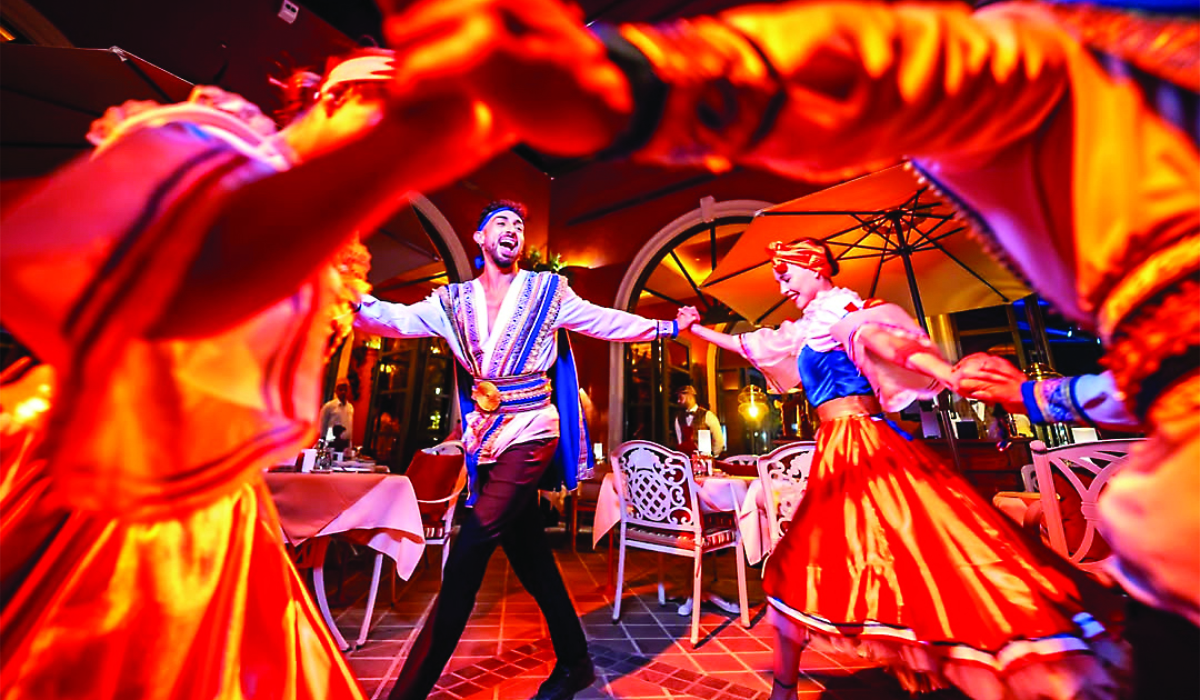
Locals and tourists alike are drawn to Southwest Village, The Groves, Dakkah Winter, and the retro-styled Ammariyah Motel, each providing a distinct blend of entertainment, relaxation, and culture.
On the outskirts of Riyadh lies Southwest Village, a meticulously designed attraction that brings the American Wild West to life. Wooden storefronts reminiscent of 19th-century frontier towns line the streets, while horse-drawn carriages and cowboy-clad performers transport visitors back in time.
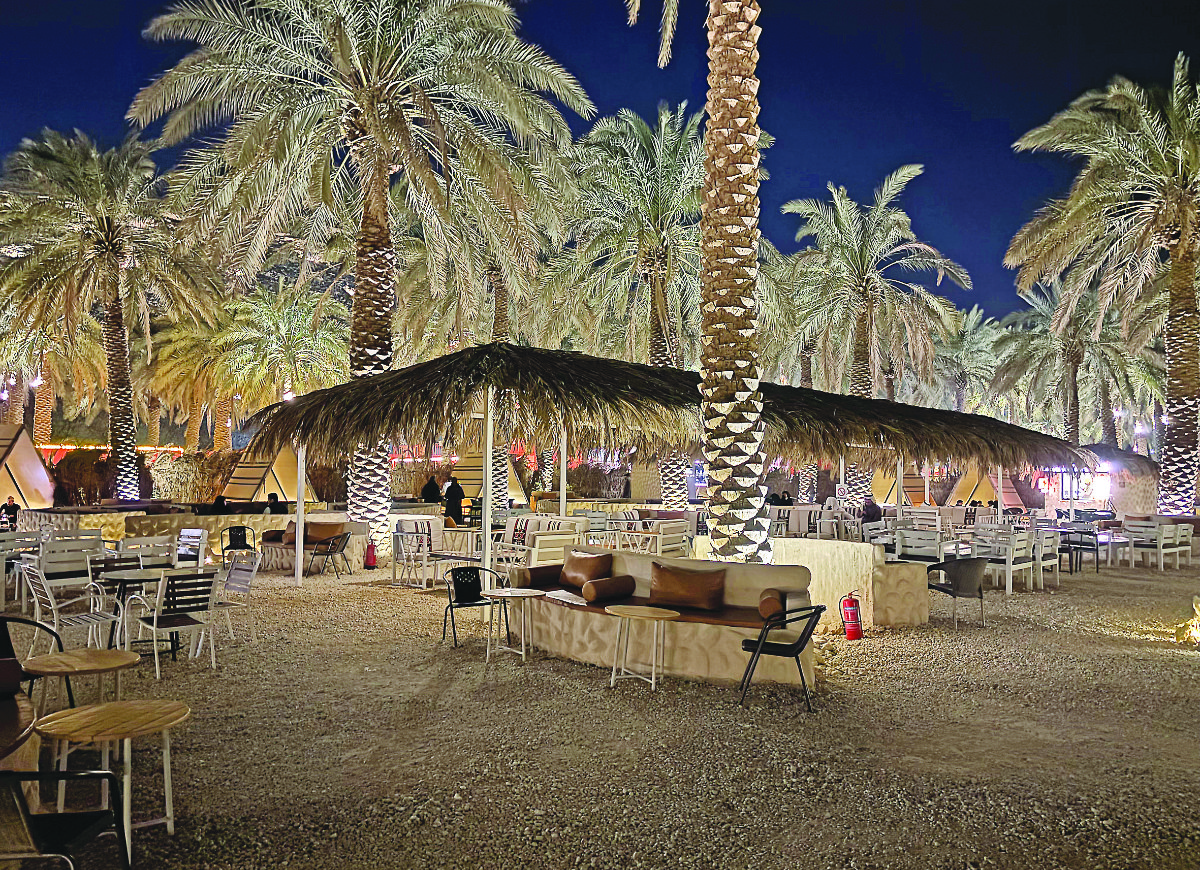
From families with children to history buffs, the village has something for everyone. The centerpiece of the village is its 6D Cowboy Theater, where interactive shows captivate audiences of all ages.
Guests find themselves immersed in the drama and adventure of the Wild West, with state-of-the-art effects that bring every scene to life. “It’s like being part of a movie,” says Salem Al-Qahtani, a frequent visitor. “The energy, the performances, and the attention to detail are outstanding.”
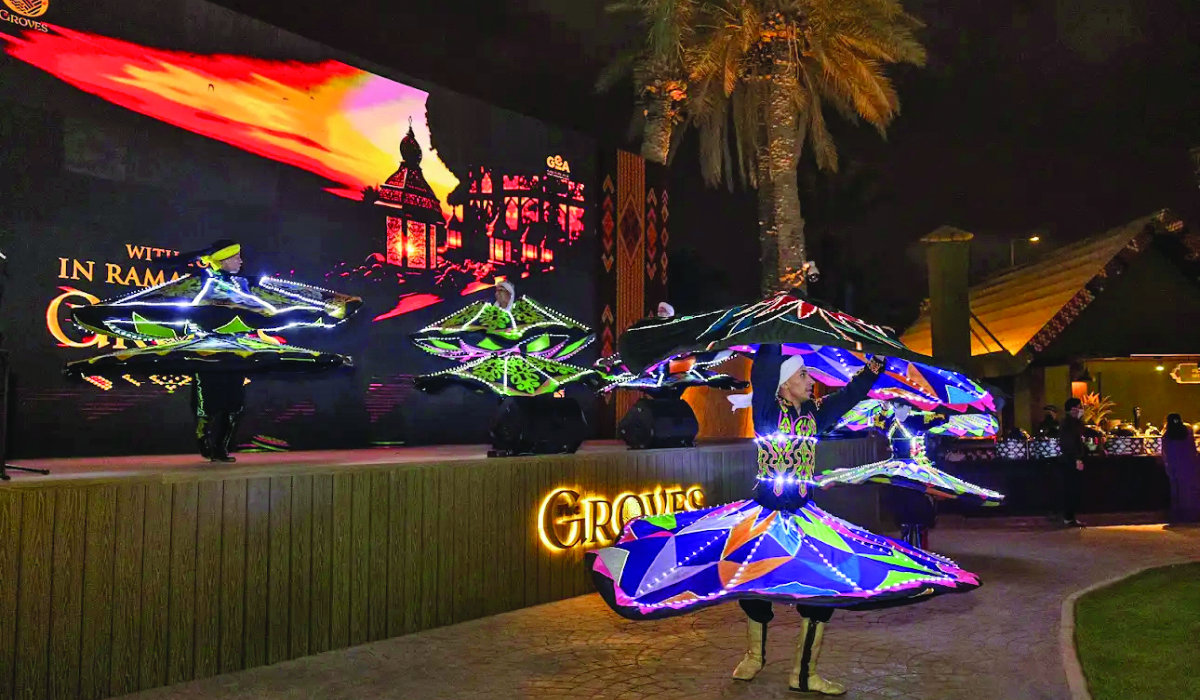
By night, the village comes alive with the glow of warm lights illuminating its bustling Route 66-inspired street. Visitors can explore food stalls serving hearty barbecue dishes, shop for souvenirs in rustic boutiques, or simply take in the atmosphere.
Children can run through haystack play areas while their parents enjoy an evening of live performances and cowboy-themed music.
It’s like being part of a movie. The energy, the performan- ces, and the attention to detail are outstanding.
Salem Al-Qahtani, Southwest Village visitor
For those seeking a more sophisticated escape, The Groves in Al-Rafiah offers a tranquil yet luxurious retreat. Nestled among lush greenery and centered around the serene Groves Lake, this destination combines fine dining, boutique shopping, and carefully curated entertainment to create a memorable experience.
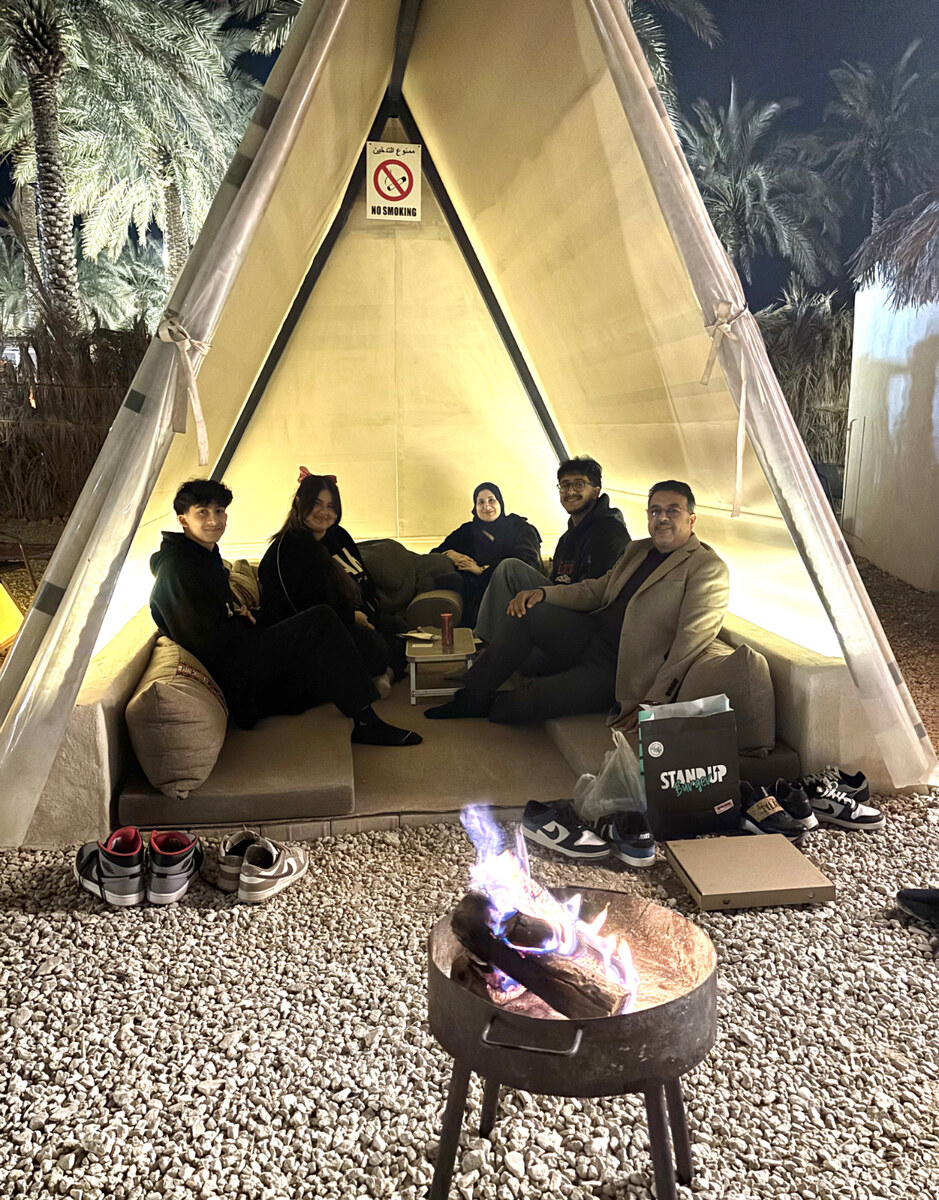
At the heart of The Groves is its iconic bridge, leading visitors to a 360-degree stage that regularly hosts live performances. The soft glow of lights reflected on the lake adds a touch of romance, making it a favorite among couples and families alike.
“We came for the performances, but it’s the atmosphere that keeps us here,” said Rania Banaser, who visited with her family. “Every corner feels like it’s been designed for relaxation and beauty.”
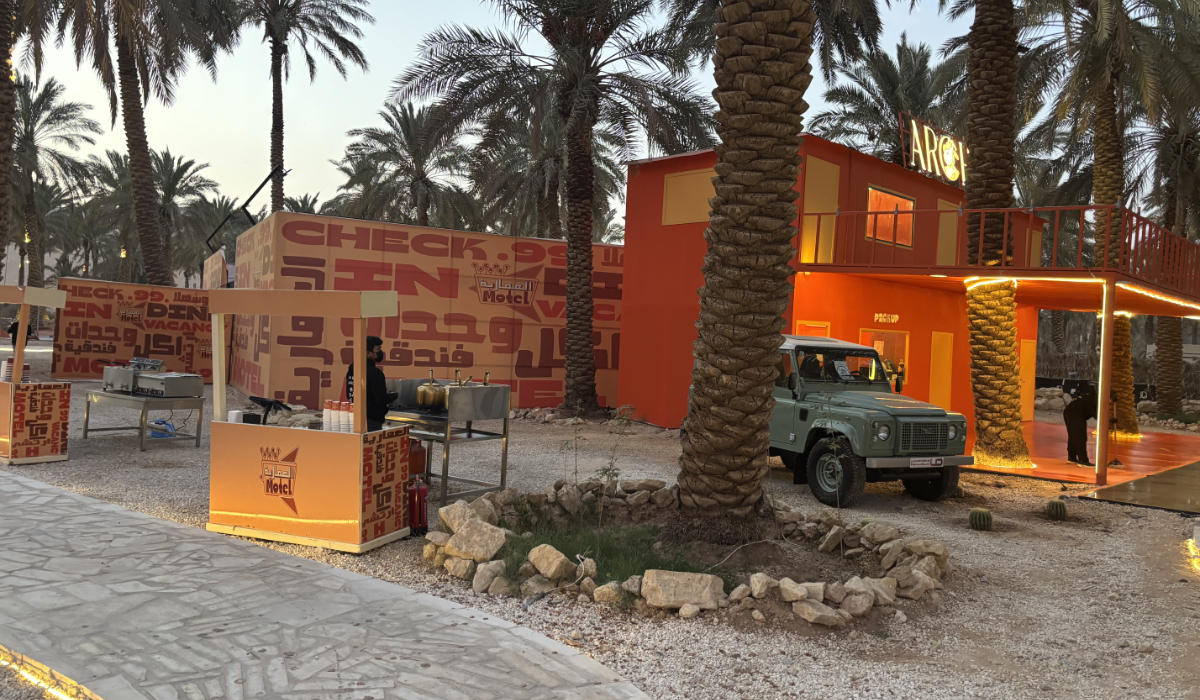
Culinary offerings at The Groves are varied: from Vida Vera’s fusion of Italian and Japanese flavors to Hawanem’s Middle Eastern-inspired dishes, every meal is an experience in itself.
For pet owners, the Luca Park dog area provides a safe space for the animals to play. “It’s rare to find a place that caters to everyone, including pets,” said Banaser.
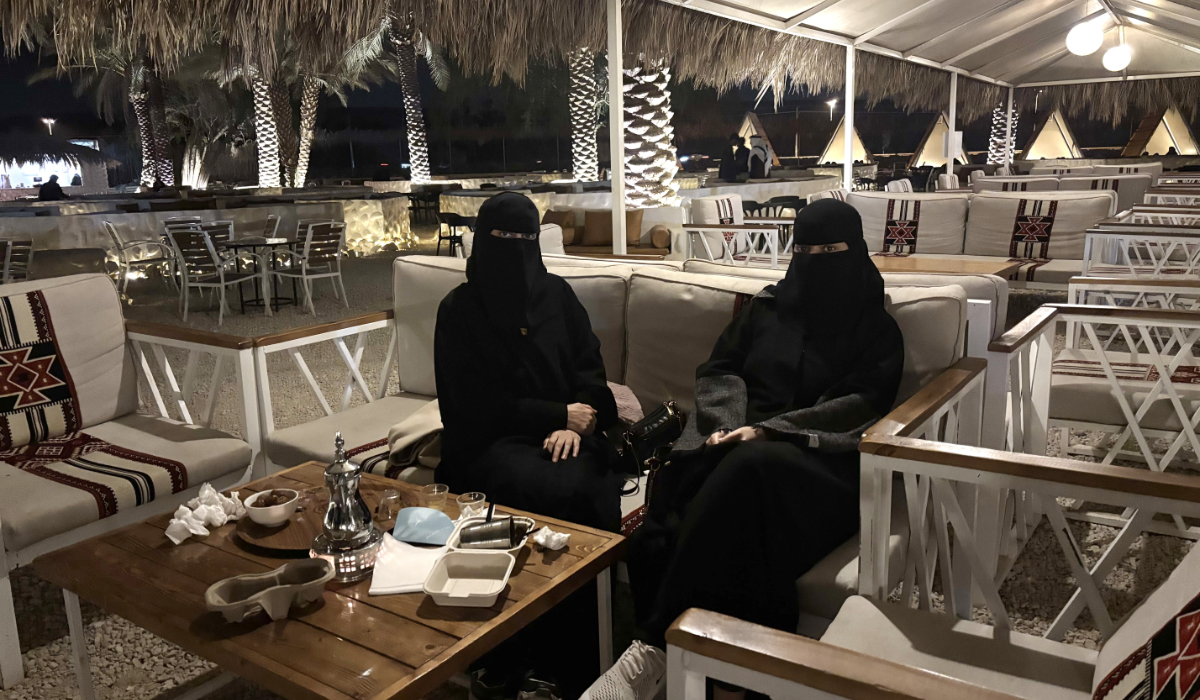
Dakkah Winter has quickly become a favorite among families looking for a relaxing yet engaging destination. With its softly lit palm trees, boutique shops, and cozy food stalls, the atmosphere is warm and welcoming.
One of the most praised aspects of Dakkah Winter is the thoughtfully designed seating arrangements. Guests can choose between open-air settings under the starry skies or private tents surrounded by the warmth of fire pits, making it a perfect spot for intimate gatherings.
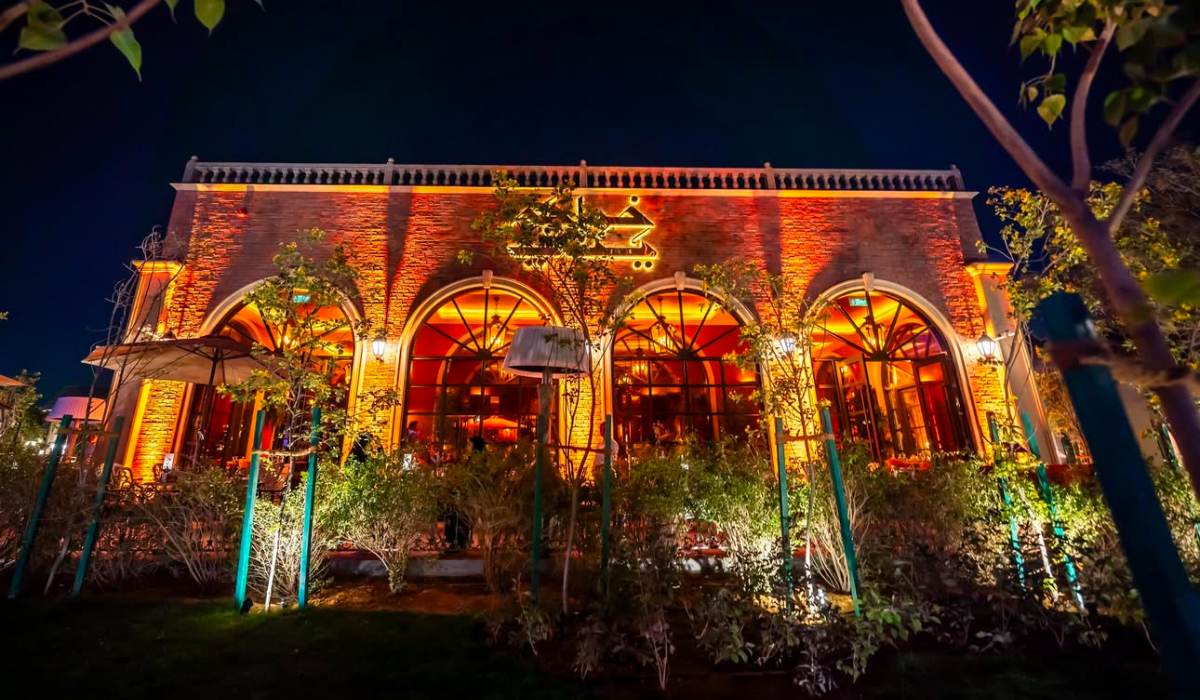
Families often gather around the crackling firewood, enjoying the serene environment and the crisp winter air.
“I think this place is really nice. I don’t think I’ve ever seen a place like this,” said Malak Hassan. “The price range is really good because it's not a typical spot where you can hang out. You can come with family and friends and it’s such an enjoyable place.”
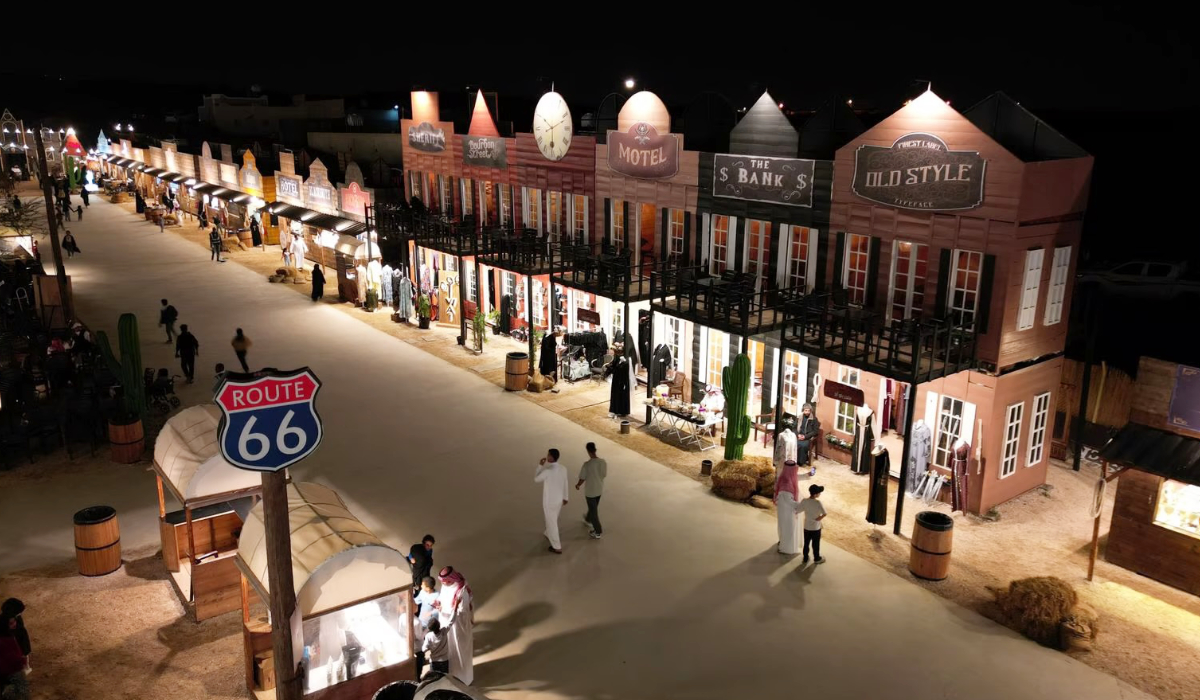
Parents can unwind over a cup of steaming Arabic coffee while children enjoy the supervised play area, designed to keep them entertained for hours.
Sabah Al-Qahtani, one of the visitors, said: “I was surprised by the location. I liked the entrance and the sitting area and everything is amazing and I will definitely come again.”
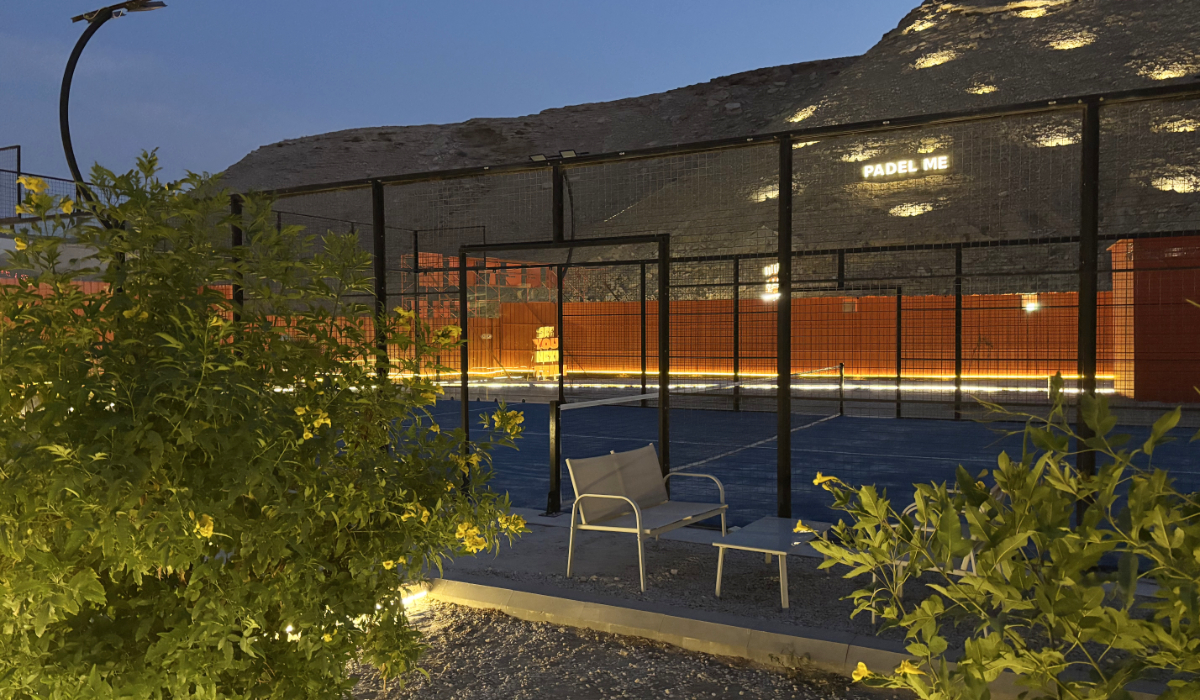
For a dose of nostalgia mixed with adventure, Ammariyah Motel is the place to go. With its vibrant orange and red hues and 1950s-inspired decor, the motel offers visitors an engaging escape from the ordinary.
Upon arrival, guests are greeted by retro signage and colorful seating areas, setting the stage for an evening of fun. The activities at Ammariyah Motel cater to both the adventurous and the more relaxed.
Guests can test their skills at paddle tennis, or simply sit back under the stars. Dining is a highlight, with the pizza bar serving freshly baked pizzas and the outdoor grill offering gourmet burgers that draw praise from visitors.
From the immersive Wild West charm of Southwest Village to the upscale elegance of The Groves, the cozy retreat of Dakkah Winter, and the retro-inspired fun at Ammariyah Motel, a unique experience that captures the spirit of the season is offered to those visiting.
Saudi nature reserve unveils winter retreat near historic Laynah village

- Laynah Camp, designed for nature lovers and desert enthusiasts, is located adjacent to the Al-Dahna Desert
- The initiative is part of the Darb Zubaydah Winter festival, which aims to promote sustainable ecotourism
RAFHA: A winter season retreat close to the historic Laynah village in the Northern Borders Region is now open to holidaymakers.
Designed for nature lovers and desert enthusiasts, the wilderness retreat, Laynah Camp, was unveiled this week by the Imam Turki Bin Abdullah Royal Nature Reserve Development Authority as part of the Darb Zubaydah Winter festival, which aims to promote sustainable ecotourism and preserve the region’s cultural and historical heritage.
Laynah Camp “offers a serene atmosphere where wildlife beauty blends with the desert’s charm, providing visitors with inspiring and adventurous moments,” a Saudi Press Agency report said.

Set against the backdrop of the Al-Dahna Desert, the fully equipped tent accommodation provides breathtaking views of the natural surroundings. To add to the experience, activities such as exploratory trips and upscale camping are on offer, the report added.
Laynah village itself has its own attractions, particularly its ancient water wells, which makes it one of the most important historical sites in the Kingdom.
In a previous SPA report, researcher and heritage and antiquities expert Abdulrahman bin Mohammed Al-Tuwaijri was quoted as saying Laynah village was known to be one of the oldest settlements in the Arabian Peninsula.
“Located on the ancient trade route between Najd and Iraq, it has throughout history provided traveling caravan convoys with respite from harsh desert conditions,” the report said.
Saudi adventurer triumphant after crossing the Empty Quarter

- Badr Al-Shaibani wants to champion Saudi Arabia as a land where heritage, nature and adventure meet
JEDDAH: Badr Al-Shaibani, a Saudi Arabia adventurer and entrepreneur, has successfully completed a 600 km solo crossing of the largest sand desert in the world.
Al-Shaibani departed from Umm Hadid on Dec. 15, the site of a famous meteorite impact, where he set up his first camp. He walked for over 14 days and completed the journey on Dec. 29 at the breathtaking Umm Al-Hayesh Lake — one of the Empty Quarter’s natural wonders.
Speaking to Arab News after completing his adventure, 45-year-old Al-Shaibani said: “Crossing the Empty Quarter on foot is one of the most thrilling adventures I have ever done. It is a really special experience.

“I am so proud to be the first Saudi to traverse such a vast distance on foot, and I hope this journey inspires young Saudis to explore the nature of our country and spotlight Saudi Arabia’s diverse potential as a truly unique global tourist destination.”
His journey began by heading toward Tawil Al-Khatam, a challenging 200 km stretch that he traversed in five days at an average pace of 40 km per day.
Later on, Al-Shaibani continued toward Umm Al-Qurun, covering 90 km, before completing another 45 km to Bayd Al-Laha.
Being alone in the darkness, you explore something you wouldn’t normally see during your life. It was an amazing scene which makes you wonder how Allah created this part of the world.
Badr Al-Shaibani, Saudi adventurer
The third and final leg led him to the Al-Qa’d region near the Sabkha salt flats through a 60 km route. His expedition concluded at the breathtaking Umm Al-Hayesh Lake after trekking an additional 160 km.
From battling the weather to navigating endless dunes, this adventure pushed Al-Shaibani to the limit both physically and mentally. “I discovered the beauty and harshness of the Empty Quarter’s untamed wilderness, where there is a constant challenge, but the rewards are incredible.”
Speaking of challenges he faced, he said: “The first two days, I faced strong storms and winds called savi, and after a while the sun was also strong. Other than that, I am used to walking on ice or climbing mountains, but walking and climbing the soft sand was a big challenge for me. I really faced difficulty climbing the sand because it takes a lot of effort.”
Being so far from civilization exposed him to new experiences. “During the day I could see with my eyes. During the night, the exploration changes,” he said.
“Being alone in the darkness, you explore something you wouldn’t normally see during your life, it was an amazing scene which makes you wonder how Allah created this part of the world.”
He was happy to complete the adventure not only to add it to his achievements but also to document and capture the majestic beauty of the largest continuous sand desert in the world.
“The Empty Quarter, with its distinctive natural heritage and captivating beauty, stands as one of the Kingdom’s most remarkable yet largely undiscovered treasures,” he said.
“This destination has the potential to become a major attraction for tourists from home and abroad, especially with initiatives that promote desert tourism and encourage the exploration of the Kingdom’s unique natural environment.”
Al-Shaibani told Arab News he wants to inspire young people and champion Saudi Arabia as a land where heritage, nature and adventure converge.

























